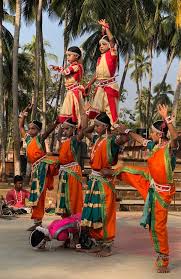Gotipua Dance:

Gotipua child artists, who experience the world as their stage and applause as a constant companion, face an uncertain future when they hit puberty.
- Gotipua Dance is the majestic folk dance of Orissa which is the precursor to the classical Odissi dance form.
- In the Orissa language, “Goti” means “single” and “Pua” means “boy”.
- In these children are trained in singing, dancing, yoga, and acrobatics within gurukuls or akhadas.
- They dress as girls and perform at temple festivals, social gatherings, and religious ceremonies.
- In ancient times, the temples of Orissa had female dancers called “Devadasi or Mahari (in Orissa)” who were devoted to Lord Jagannath.
- During the time of Bhoi king Rama Chandra Dev with the decline of the Mahari dancers, the class of these boy dancers came into existence in Orissa, to carry out the tradition.
- In its present form, the Gotipua Dance is more precise and systematic in its conception.
- Its performance includes Vandana (prayer to God, or a guru), Abhinaya (the enactment of a song) and Bandha Nritya (rhythms of acrobatic postures).
- Bandha Nritya is a demonstration of physical prowess requiring great agility and flexibility. Preferably performed in adolescence, with age, this dance form becomes increasingly difficult to execute.
- The dancers make extensive use of their hands and feet.
- Musical accompaniment to the Gotipua Dance is provided by the Mardala (a pakhawaj), Gini (small cymbals), harmonium, violin and flute.




